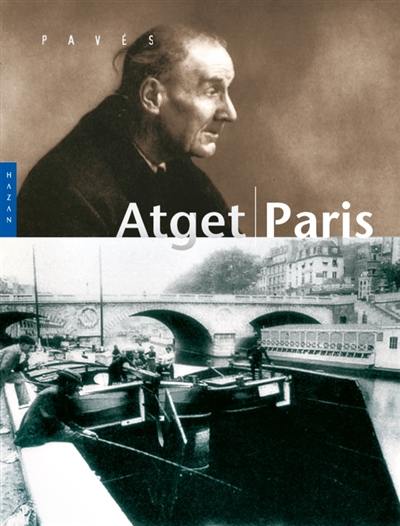
Collection(s) : Pavés
Paru le 01/03/1998 | Broché 787 pages
Tout public
Ce qui rend l'oeuvre d'Atget unique, ce n'est ni le pittoresque des images d'un Paris disparu, ni la technique des prises de vue, si souveraine qu'elle soit: d'autres photographes, avant et après lui, de Marville à Brassaï, ont accédé à ce niveau.
Mais Atget organise méthodiquement un univers singulier et son moyen, c'est la patience: d'une part, une lente imprégnation, d'autre part, le nombre, la profusion des images. Des milliers de photographies, heurtoirs et étalages, voitures et vitrines, ruelles, cours, balcons, cafés, le plus souvent sans présence humaine, mais avec ailleurs les petits métiers, les prostituées du XIXe arrondissement, les chiffonniers de la zone auxquels va de toute évidence sa sympathie d'homme du peuple. Quand ses voisins de la rue Campagne-Première, Man Ray, De Chirico, Berenice Abott, le «découvrent», il se défend d'être un artiste: «ce ne sont que des documents, des documents que je fais». Pourtant les surréalistes ne s'égaraient pas, en reconnaissant la poésie de cette obsessionnelle et proliférante recherche.
Ce livre réunit 840 photographies d'Atget sur Paris, soit beaucoup plus qu'aucun autre avant lui. Il est organisé par arrondissements et quartiers, comme l'avait conçu Atget pour son parcours dans la ville et le classement de ses documents. Le mode de reproduction ne sacrifie pas à la mode du sépia ou aux effets nostalgiques: Atget, s'il a photographié le «Vieux Paris», est pourtant le premier photographe moderne au sens baudelairien du terme. La forme du livre, celle d'un pavé parisien, est en elle-même une manière d'hommage à ce piéton mythique, l'un des plus inspirés flâneurs de la capitale.
What makes the work of Eugène Atget unique is neither the picturesque appeal of his images of a vanished Paris, nor his technical mastery, however great: in both respects he has been matched by other photographers before and since, from Marville to Brassaï. Atget's achievement is that he methodically constructs a universe that is all his own. His chosen method is patience: his images are slowly absorbed, through long exposures, and they exist in immense profusion. There are thousands of them, showing door knockers and goods on display, vehicles, shop windows, alleyways, courtyards, balconies, cafés. Most contain no human presence, although in some of his work we see the humble tradespeople of Paris, or the prostitutes of the 19th district, or the ragpickers who lived along the «zone» of the old fortifications: those with whom, as a man of the people himself, he most closely identified. When Atget was «discovered» by Man Ray, Giorgio de Chirico, and Berenice Abbott - his neighbors on rue Campagne-Première - he refused to accept that he was an artist: «The pictures I take are simply documents.» And yet the Surrealists made no mistake when they hailed the poetic quality of his haunting, proliferating quest.
This book brings together 840 of Atget's photographs of Paris: far more than any of its predecessors. It arranges Atget's work just as he himself did, district by district and neighborhood by neighborhood. The reproductions make no concessions to the fashion for sepia, or to nostalgic effects of any kind: Atget certainly photographed «Old Paris», but - in the sense in which Baudelaire used the term - he was also the first modern photographer. The shape of this book, which is that of a Parisien paving stone, is in itself a tribute to Atget the legendary walker, one of the most inspired of all the flaneurs of Paris.
Laure Beaumont-Maillet spécialiste de l'histoire de Paris, dirige le département des Estampes et de la Photographie de la Bibliothèque nationale.
Laure Beaumont-Maillet a specialist in the history of Paris, is Chief Curator of the Department of Prints and Photography at the Bibliothèque nationale.